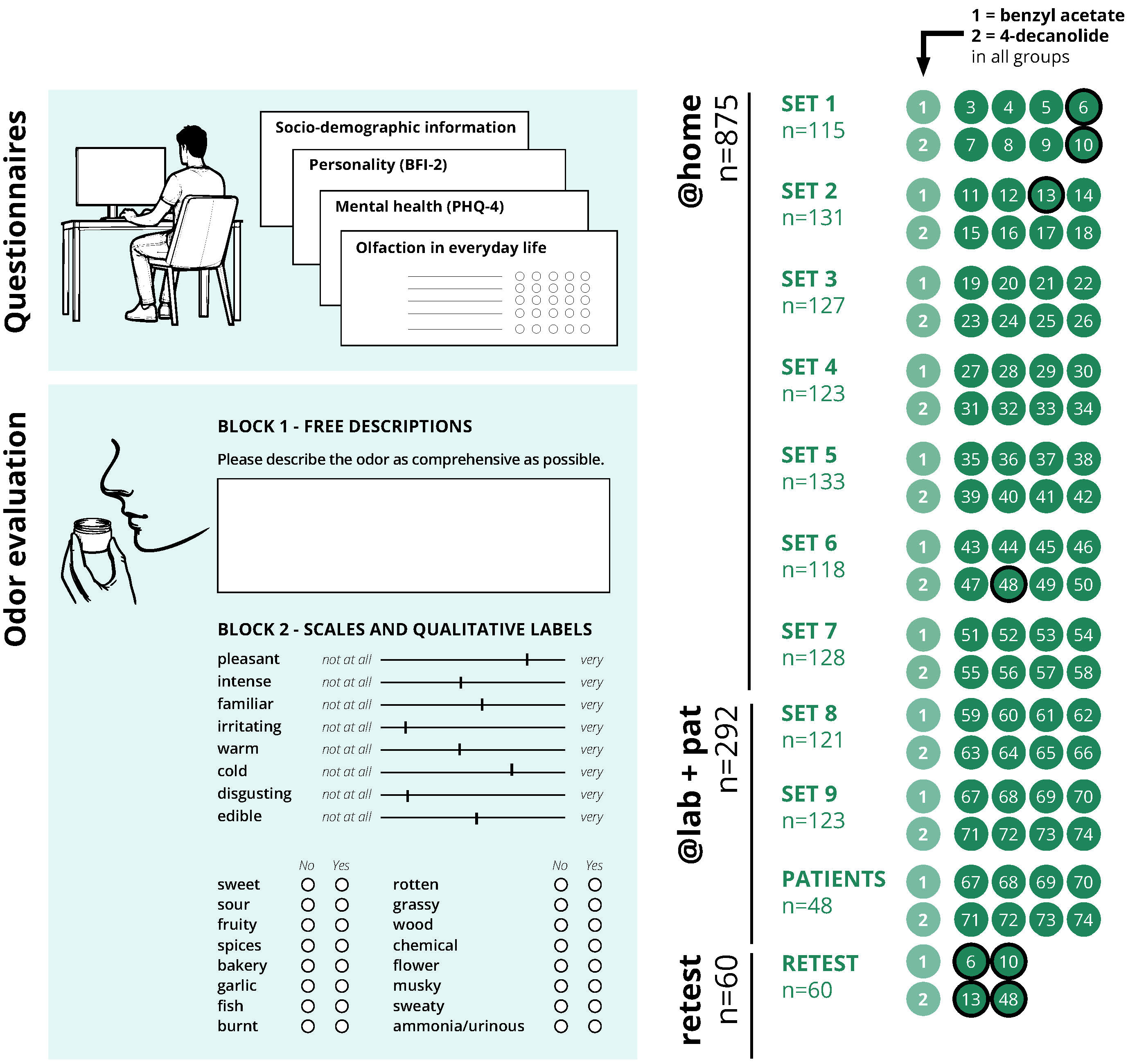Olfactory Research Needs More Data: A Dataset of Laymen Olfactory Perception for 74 Mono-Molecular Odors
Published in Chemistry, Neuroscience, and Behavioural Sciences & Psychology

Explore the Research

A dataset of laymen olfactory perception for 74 mono-molecular odors
Scientific Data - A dataset of laymen olfactory perception for 74 mono-molecular odors
The question of what makes an odor smell the way it does has intrigued researchers in olfactory perception for decades. Significant advancements have been made in understanding this complex process. Thanks to the pioneering work of Nobel laureates Linda Buck and Richard Axel [1], we know today that odor perception arises from the pattern of how odorant molecules bind to specific receptors in the nose. Further research has revealed that molecular size and complexity influence perceived pleasantness [2], and certain chemical groups, such as esters, are commonly associated with characteristic smells like fruitiness [3]. However, the so-called "stimulus-percept problem" – the exact relationship between molecular structure and sensory perception – remains unsolved. Unlike vision, where the wavelength of light directly corresponds to a specific color, no equivalent mapping yet exists for olfaction.
The Data Deficit in Olfactory Research
A key challenge in olfactory science is the lack of comprehensive psychophysical datasets that link odor stimuli to human perception. Previous research has largely relied on expert assessments or perfume industry databases, both of which present significant limitations. These datasets use a handful to hundreds of descriptors, which are not only inconsistent between datasets, but typically also within a set. Most datasets lack transparency on how or by whom data have been collected. Moreover, these datasets may not accurately represent how laypeople perceive odors [4].
Addressing the Gap: A Large-Scale Dataset of Laymen Olfactory Perception
To bridge this gap, we developed a dataset of olfactory perception for 74 chemically diverse mono-molecular odorants, evaluated by 1,227 lay participants. Our goal was to create a comprehensive and publicly accessible dataset that accurately reflects how non-experts perceive a broad range of odors. Our participants provided free descriptions of each odor, rated them on multiple sensory dimensions, and completed questionnaires on socio-demographic background, personality traits, and the importance of olfaction in their daily lives. The selected odorants cover a wide chemical spectrum and were chosen with reference to prior datasets, such as that of Keller & Vosshall [5], to facilitate cross-dataset comparisons and integration.

Using the Dataset
With this dataset, we expect to provide researchers with a valuable tool for further investigations on the structure-percept problem. Moreover, the dataset is a useful database for olfactory research. The dataset is freely accessible via this link.
References
- Buck, L., & Axel, R. A novel multigene family may encode odorant receptors: a molecular basis for odor recognition. Cell, 65(1), 175-187 (1991).
- Kermen, F. et al. Molecular complexity determines the number of olfactory notes and the pleasantness of smells. Scientific reports 1, 206, https://doi.org/10.1038/srep00206 (2011).
- Genva, M., Kenne Kemene, T., Deleu, M., Lins, L. & Fauconnier, M.-L. Is it possible to predict the odor of a molecule on the basis of its structure? Int. J. Mol. Sci. 20, 3018 (2019).
- Croijmans, I. & Majid, A. Not all flavor expertise is equal: The language of wine and coffee experts. PLoS One 11, e0155845 (2016).
- Keller, A., & Vosshall, L. B. (2016). Olfactory perception of chemically diverse molecules. BMC neuroscience, 17, 1-17.
Follow the Topic
-
Scientific Data

A peer-reviewed, open-access journal for descriptions of datasets, and research that advances the sharing and reuse of scientific data.
Related Collections
With Collections, you can get published faster and increase your visibility.
Data for crop management
Publishing Model: Open Access
Deadline: Jan 17, 2026
Computed Tomography (CT) Datasets
Publishing Model: Open Access
Deadline: Feb 21, 2026

Please sign in or register for FREE
If you are a registered user on Research Communities by Springer Nature, please sign in